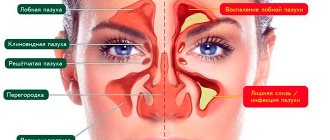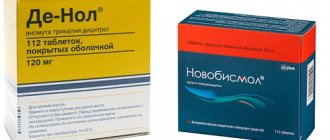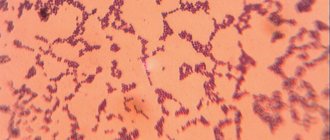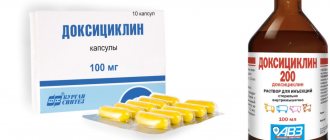Classification and mechanism of action
Depending on how many carbon atoms are contained in the antibiotic molecule, they are divided into 14-membered, 15-membered and 16-membered. The first include substances such as erythromycin and clarithromycin. The second is azithromycin. 16-membered macrolides are represented by spiramycin, josamycin and midecamycin. Please note that we are talking about active ingredients.
The drugs themselves will be discussed below. Macrolides are antibiotics that disrupt protein synthesis in the ribosomes of microbial cells. This ensures a bacteriostatic effect. Macrolides also have an anti-inflammatory and immunomodulatory effect on the body. These antibiotics kill the causative agents of diphtheria, whooping cough, moraxella, ureaplasma, chlamydia and some anaerobes.
Macrolides: drugs of this group of antibiotics, list, names, effectiveness
Update: October 2018
Macrolides are a group of antibacterial drugs whose structural basis is a macrocyclic lactone ring. Due to their ability to disrupt the formation of bacterial proteins, macrolide antibiotics stop their vital activity. In high dosages, the drugs completely destroy microorganisms.
Antibiotics from the macrolide group are active against:
- gram-positive bacteria (streptococci, staphylococci, mycobacteria, etc.);
- gram-negative bacilli (enterobacteriaceae, Helicobacter pylori, Haemophilus influenzae, etc.);
- intracellular microorganisms (moraxella, legionella, mycoplasma, chlamydia, etc.).
The action of macrolides is mainly aimed at the treatment of infectious diseases of the respiratory tract due to atypical and gram-positive pathogens.
Popular drugs
In the list of macrolide antibiotics, there are two substances that are most commonly used at the moment:
- clarithromycin;
- azithromycin.
These are representatives of two different generations of macrolide drugs. From these, azithromycin was later obtained. Despite the fact that they are united by the mechanism of action on microbes and belonging to the same group, there are significant differences:
| Comparison parameter | Azithromycin | Clarithromycin |
| Microbial spectrum of action |
| |
| ||
| Effect speed | Within 2-3 hours. A stable concentration of the drug in the blood appears after 5-7 days of regular use. | Within 2-3 hours. A stable concentration of the drug in the blood occurs after 2-3 days of regular use. |
| Efficiency | Equally effective in the treatment of Helicobacter gastritis. Azithromycin distributes better throughout the lung tissue when treating a pulmonary infection, however, the effectiveness of the drug is similar to clarithromycin in a similar case of administration. Azithromycin is more effective against legionellosis. | |
| Adverse reactions |
| |
|
| |
| Safety for pregnant and lactating patients |
|
Thus, the advantages of azithromycin include fewer adverse reactions in the form of severe life-threatening conditions.
For clarithromycin, the advantages of use are a wider spectrum of action and rapid achievement of stable levels in the patient’s blood.
The main disadvantage for both macrolide antibiotics is their undesirable use in pregnant women, which complicates the choice of drug in this population group.
Classification of macrolides
All generations of macrolides that have appeared as scientific research has progressed are divided according to their origin into natural and semi-synthetic. The former are derivatives of natural raw materials, the latter are artificially obtained medicinal substances.
It is also important to divide drugs according to their structural features. Depending on how many carbon atoms the macrolide ring of a substance contains, they are divided into 3 large generations:
14-member
| Representatives | Tradename | Method of application, price |
| Oleandomycin | Oleandomycin phosphate | Powder-substance. An outdated macrolide, practically not found in pharmacies. |
| Clarithromycin | Klacid | Tablets: 0.5 g x 2 times a day, taken for 14 days. 500-800 rub. |
| Granules for preparing a suspension inside a bottle: slowly pour water to the mark, shake the bottle, drink twice a day (the bottle contains 0.125 or 0.25 g of the substance). 350-450 rub. | ||
| Solution for intravenous administration: 0.5 g x 2 times a day (daily dose - 1.0 g), after mixing with a solvent. 650-700 rub. | ||
| Clarithrosin | Tablets: 0.25 g x 2 times a day, regardless of food intake, course 14 days. 100-150 rub. | |
| Fromilid | Tablets: 0.5 g x 2 times a day, regardless of food intake, course 14 days. 290-680 rub. | |
| Clarithromycin-Teva | Tablets: 0.25 g x 2 times a day for 7 days or increase the dose to 0.5 g x 2 times a day for 2 weeks. 380-530 rub. | |
| Erythromycin | Erythromycin | Tablets: 0.2-0.4 g four times a day before (30-60 minutes) or after meals (1.5-2 hours), washed down with water, course 7-10 days. 70-90 rub. |
| Eye ointment: place behind the lower eyelid three times a day, course 14 days. 70-140 rub. | ||
| Ointment for external use: apply a small layer to the affected skin 2-3 times a day, the duration of the course is determined individually depending on the severity of the pathology. 80-100 rub. | ||
| Lyophilisate for the preparation of intravenous solution: 0.2 g of the substance, diluted with a solvent, 3 times a day. The maximum duration of use is 2 weeks. 550-590 rub. | ||
| Roxithromycin | Esparoxy | Tablets: 0.15 g x 2 times a day 15 minutes before meals or 0.3 g once, course 10 days. 330-350 rub. |
| Rulid | Tablets: 0.15 g x 2 times a day, course 10 days. 1000-1400 rub. | |
| RoxyHEXAL | Tablets: 0.15 g x 2 times a day or 0.3 mg at a time, course 10 days. 100-170 rub. |
15-member
| Representatives | Tradename | Method of application, price |
| Azithromycin | Sumamed | Tablets: 0.5 g x 1 time per day, an hour before or 2 hours after meals. 200-580 rub. |
| Powder for oral suspension in bottles: add 11 ml of water to the contents of the bottle, shake, take once a day an hour before or 1.5-2 hours after meals. 200-570 rub. | ||
| Capsules: 0.5 g (1 capsule) once a day an hour before or 2 hours after a meal. 450-500 rub. | ||
| Azitral | Capsules: 0.25/0.5 g x 1 time per day before or 2 hours after meals. 280-330 rub. | |
| Zitrolide | Capsules: 2 capsules (0.5 g) in one dose, 1 time per day. 280-350 rub. | |
| Azitrox | Capsules: 0.25/0.5 g x 1 time per day. 280-330 rub. | |
| Powder for oral suspension in bottles: add 9.5 ml of water to the bottle, shake, take 2 times a day. 120-370 rub. |
16-member
| Representatives | Tradename | Method of application, price |
| Spiramycin | Rovamycin | Tablets: 2-3 tablets (3 million IU each) or 4-6 tablets (6-9 million IU) in 2-3 oral doses per day. 1000-1700 rub. |
| Spiramycin-vero | Tablets: 2-3 tablets (3 million IU each) 2-3 times orally per day. 220-1700 rub. | |
| Midecamycin | Macropen | Tablets: 0.4 g x 3 times a day, course 14 days. 250-350 rub. |
| Josamycin | Vilprafen | Tablets: 0.5 g x 2 times a day, without chewing, with a sufficient amount of water. 530-610 rub. |
| Vilprafen solutab | Tablets: 0.5 g x 2 times a day, without chewing or dissolved in 20 ml of water. 670-750 rub. |
The list of 14-membered macrolides is distinguished by the development of pronounced resistance of microorganisms to their action. That is why the first subgroup of macrolide antibiotics is not prescribed immediately, but only if other antibacterial agents are ineffective.
These are reserve medications. Oleandomycin and erythromycin are low toxic and almost never cause serious adverse reactions. More often you can encounter nausea, vomiting, general malaise, allergies (urticaria, etc.). The first generation of macrolides should not be prescribed to pregnant and lactating patients.
Among the list of 14-member drugs, the most active against Helicobacter pylori is clarithromycin, which made it possible to include it in one of the treatment regimens for chronic gastritis in people infected with this microorganism. It is three times more active than erythromycin for coccal infections and lasts twice as long. Oleandomycin, on the contrary, is almost never used at present, since it is outdated and does not show high antimicrobial activity.
The latest generation macrolides are the most modern representatives of the class. In particular, josamycin, with rare exceptions, does not act on bacteria that have developed resistance.
This is an effective and safe medicine that is approved during pregnancy and breastfeeding. Spiramycin is also acceptable during pregnancy, but is prohibited for lactating women, as it passes into breast milk.
The drug midecamycin is a reserve macrolide and is not recommended for expectant mothers and nursing women.
Use in childhood
The use of macrolides for children is a separate section: drugs in this group are not always approved for use without restrictions. In addition, recommended dosages of medications are lower than those for the adult population, and are almost always calculated based on the baby’s body weight.
Erythromycin solution for intravenous administration can rarely cause acute toxic hepatitis in a child. The substance is prescribed at a dose of 30-40 mg per kilogram of body weight, this daily dose is divided into 2-4 doses. The duration of the course is unchanged (7-10 days).
Drugs containing the macrolide clarithromycin are limited to newborns and infants up to 6 months. For children over 12 years of age, they are prescribed 250 mg twice a day.
Roxithromycin is not recommended for babies under 2 months, while others are prescribed 5-8 mg per 1 kg of body weight. The dose is divided into 2 doses.
Azithromycin is not used in children:
- up to 16 years (for infusion forms);
- up to 12 years with a weight of less than 45 kg (for tablet and capsule form);
- up to six months (for suspension).
In this case, the dosage for children over 12 years of age with a body weight of more than 45 kg is the same as the adult dose. And for a child 3-12 years old and weighing less than 45 kg, an antibiotic is prescribed at 10 mg per kilogram once a day.
The dose of josamycin is 40-50 mc/kg. It is evenly divided into 2-3 doses per day. It is recommended to prescribe 1-2 grams. Spiramycin tablets of 1.5 million IU are not given to children under 3 years of age, and 3 million IU tablets are not given to children under 18 years of age. The maximum dose is 300 IU per kilogram per day.
Bacterial resistance
Bacterial microorganisms are capable of developing resistance (immunity) to the action of antibiotics. Macrolides are no exception. Bacteria included in the spectrum of action of macrolides “avoid” their influence in three ways:
- Modification of cellular components.
- Inactivation of the antibiotic.
- Active “release” of the antibiotic from the cell.
In recent years, scientists have noted a worldwide increase in the immunity of bacterial organisms to the macrolide series. In the USA, as well as Central and Southern Europe, resistance reaches 15-40%.
According to the Consilium Medicum portal, in addition to macrolide resistance, there is insufficient effectiveness of aminoglycosides and methicillin (up to 30% of cases).
For Turkey, Italy and Japanese lands, bacterial immunity ranges from 30-50%.
In Russia the situation is also getting worse over time. The results of the study under the supervision of the Research Clinical Institute of Otorhinolaryngology named after. L.I.
Sverzhevsky states: the resistance of Staphylococcus pneumoniae (pneumococcus) in Moscow patients to 15-membered azithromycin increased by 12.9% (from 8.4% to 21.3%) in the period 2009-2016. In Yaroslavl, low resistance of S.
pyogenes to erythromycin (7.5-8.4%). But for Tomsk and Irkutsk this figure was higher - 15.5% and 28.3%, respectively.
The group of macrolides is one of the safest at present. The wide spectrum of activity of the drugs allows them to be successfully used in the treatment of infections of varying severity, including as “reserve” drugs. But to prevent the development of microbial resistance, you should not take these medications on your own without first consulting a specialist.
Selezneva Valentina Anatolyevna physician-therapist
Source: https://zdravotvet.ru/makrolidy-gruppa-antibiotikov-preparaty-spisok-nazvaniya/
Pharmacokinetics of the drug
The absorption of all of these antibiotics in the digestive tract depends on the dosage form chosen and whether the medications are taken with or after meals. Food affects the bioavailability of some drugs. It is recommended to monitor their content in the blood serum in order to select the optimal concentration. Macrolides are antibiotics that bind to plasma proteins. Their maximum concentration is observed in tissues. Well distributed in the body, they penetrate well into cells. High concentrations of macrolides in organs (for example, in the prostate gland) provide a good therapeutic effect. The waste products of these antibiotics are eliminated from the body by the liver.
History[ | ]
Erythromycin, which laid the foundation for the macrolide class, was obtained in 1952 by American pharmaceutical scientists [2] from the soil actinomycete Streptomyces erythreus
and has been used to treat infections caused by gram-positive bacteria as an alternative drug in patients allergic to penicillins. Erythromycin has retained its place in the arsenal of doctors to this day.
The expansion of the scope of use of macrolides occurred in the 70-80s due to their high activity against intracellular pathogens such as mycoplasma, chlamydia, campylobacter and legionella.
This served as an incentive for the development and introduction into the clinic of new macrolide drugs with improved pharmacokinetic and microbiological parameters, as well as for a more detailed study of some early macrolides, for example, spiramycin.
In 1996, a new group of 18-membered macrolides was discovered from the sponge Leucascandra caveolata
, living in New Caledonia, named Leucascandrolide A[3].
New generation macrolides
The drug "Sumamed" ("Azithromycin") shows the highest concentrations in cells.
With its help, diseases of the bronchi and lungs can be effectively treated. Also, the latest generation of macrolides are often used in urology and gynecology, for example as anti-chlamydial agents. The drugs "Josamycin" and "Roxithromycin" are better tolerated and less likely to disrupt the functions of the liver and gastrointestinal tract. The medicine "Sumamed" is often used in pediatrics. Do not be afraid that a strong drug will harm the child. If it is prescribed by a doctor who is motivated by effectiveness, it can be taken without concern. After all, the medicine “Sumamed” is absorbed into the blood faster, without lingering in the stomach or intestines (and without irritating their lumen).










